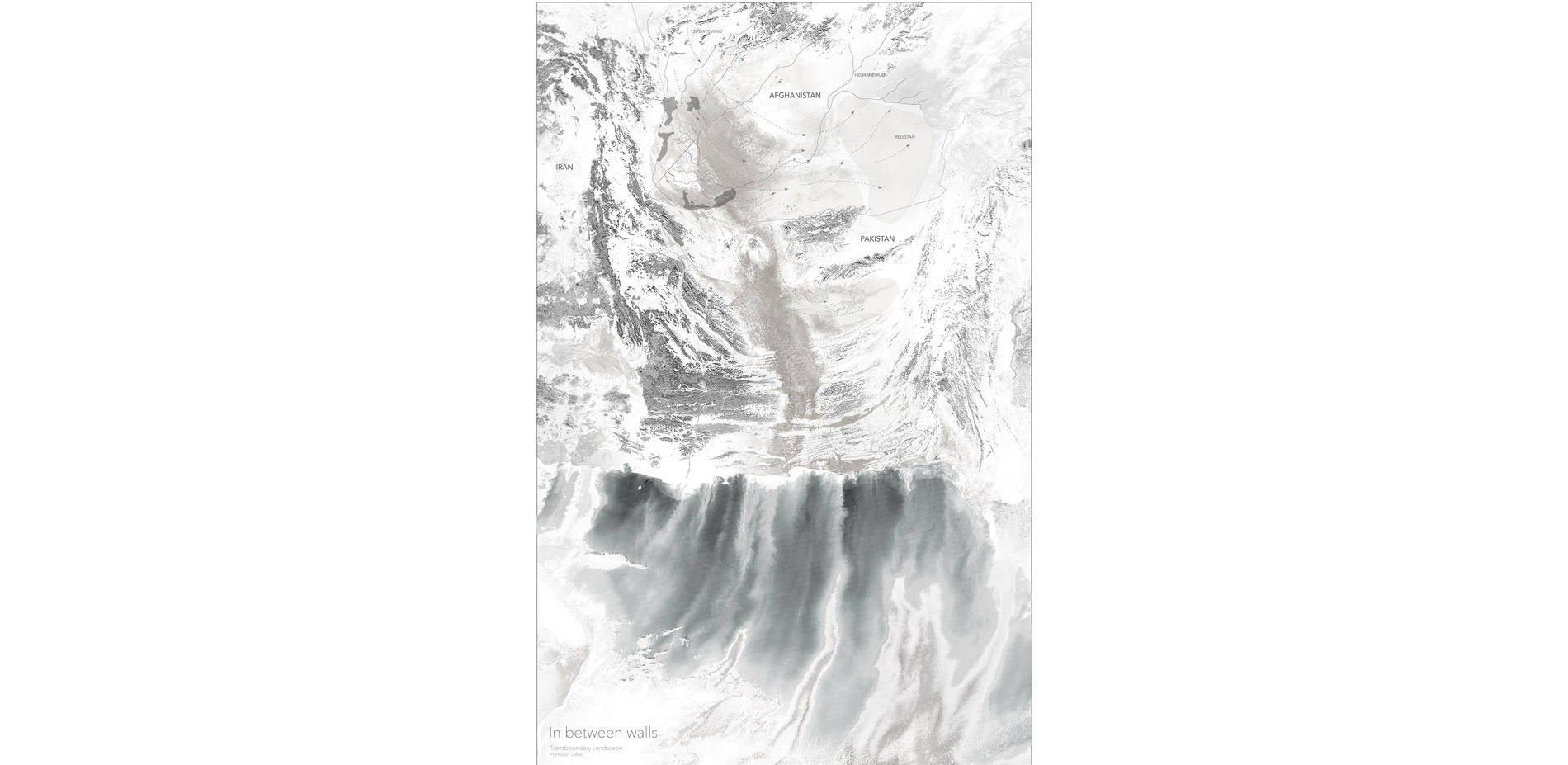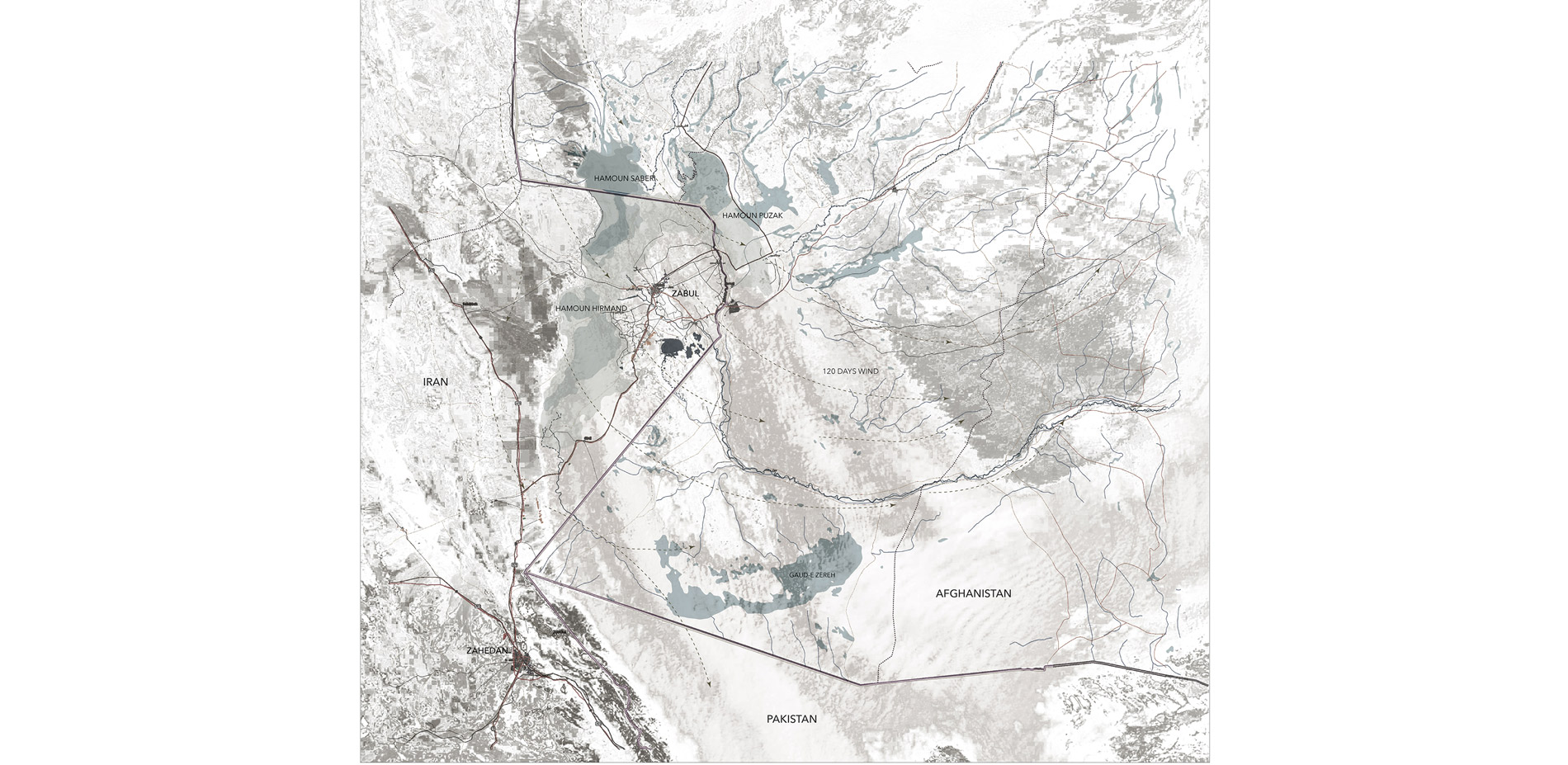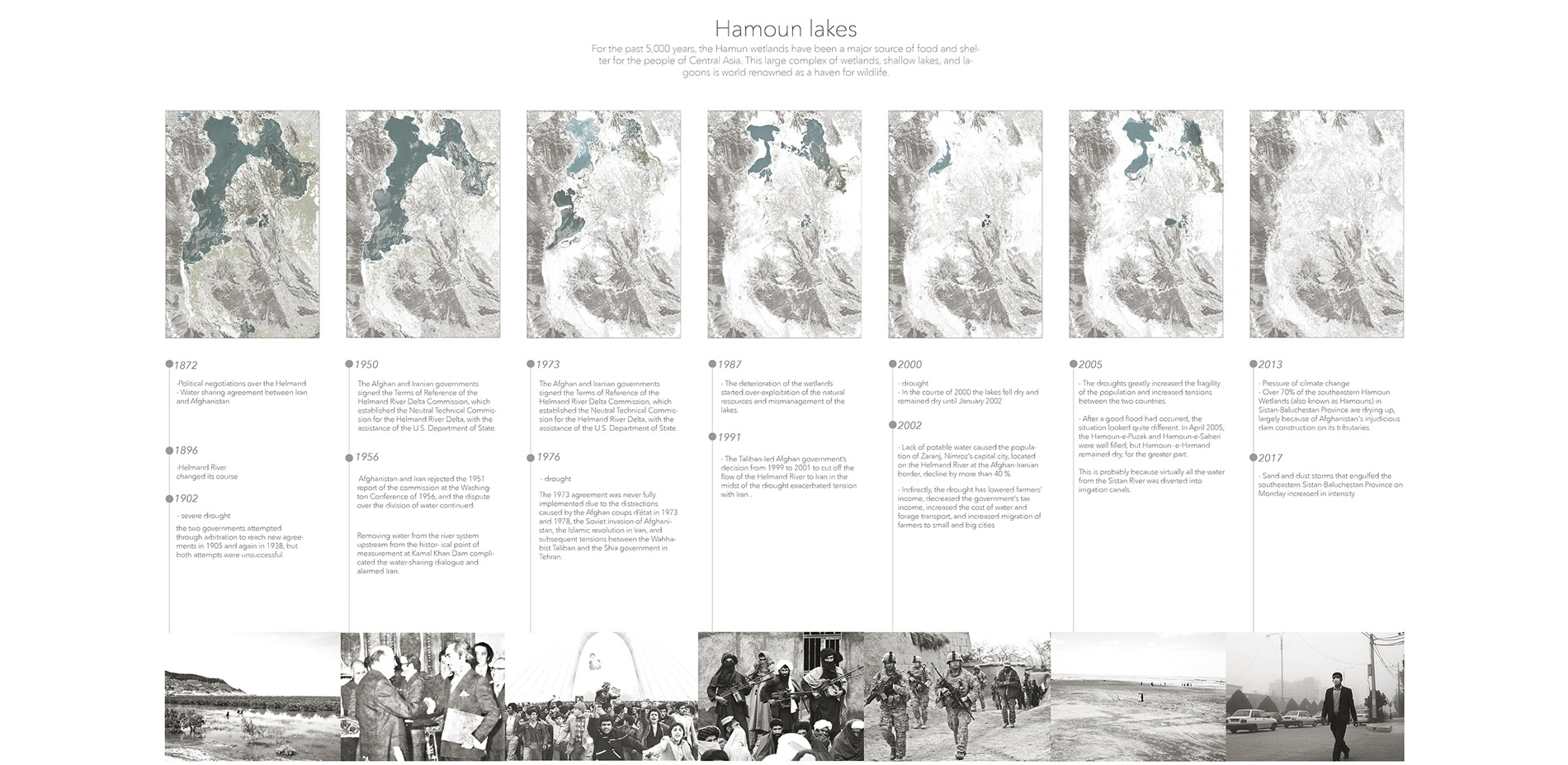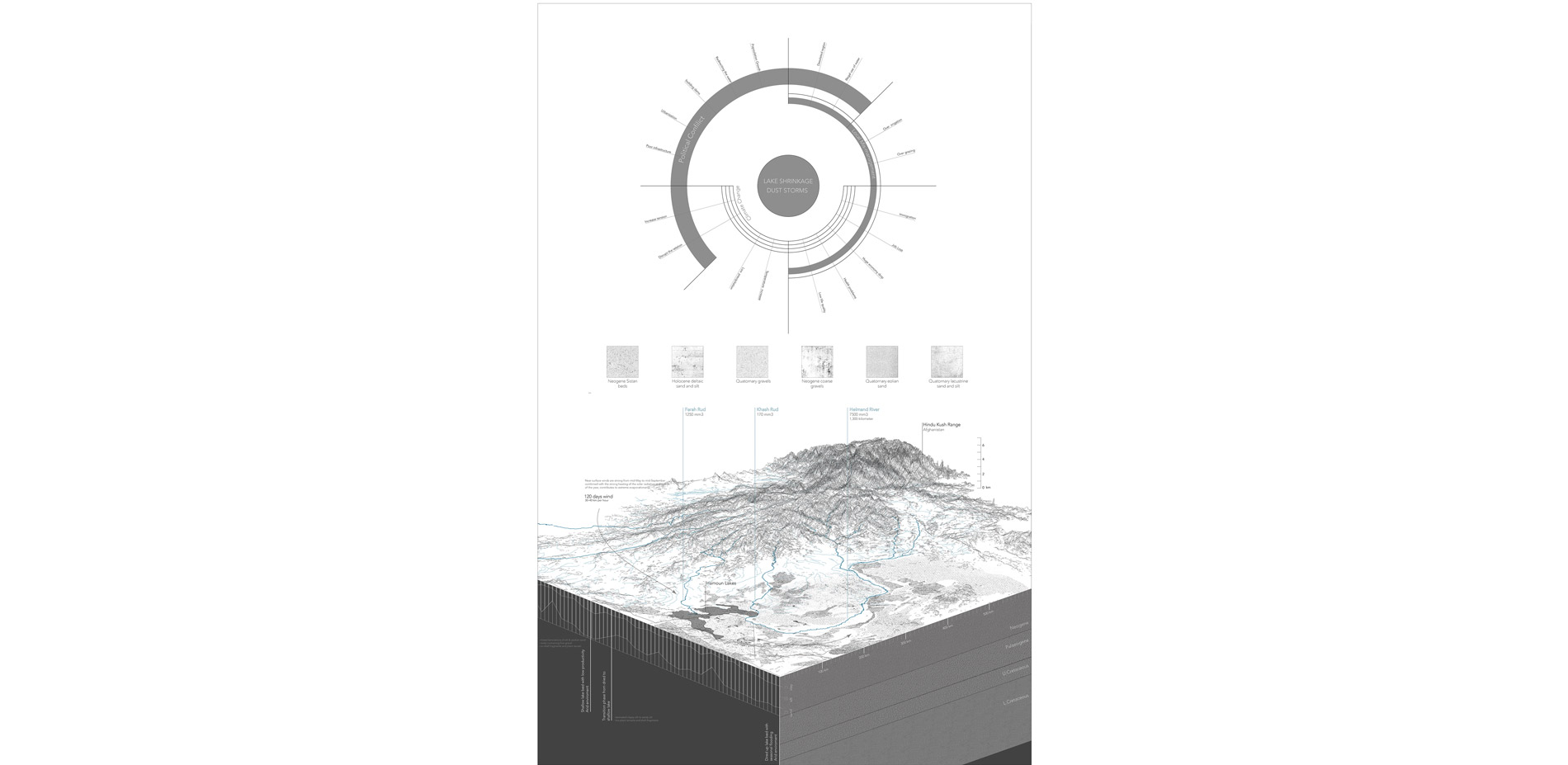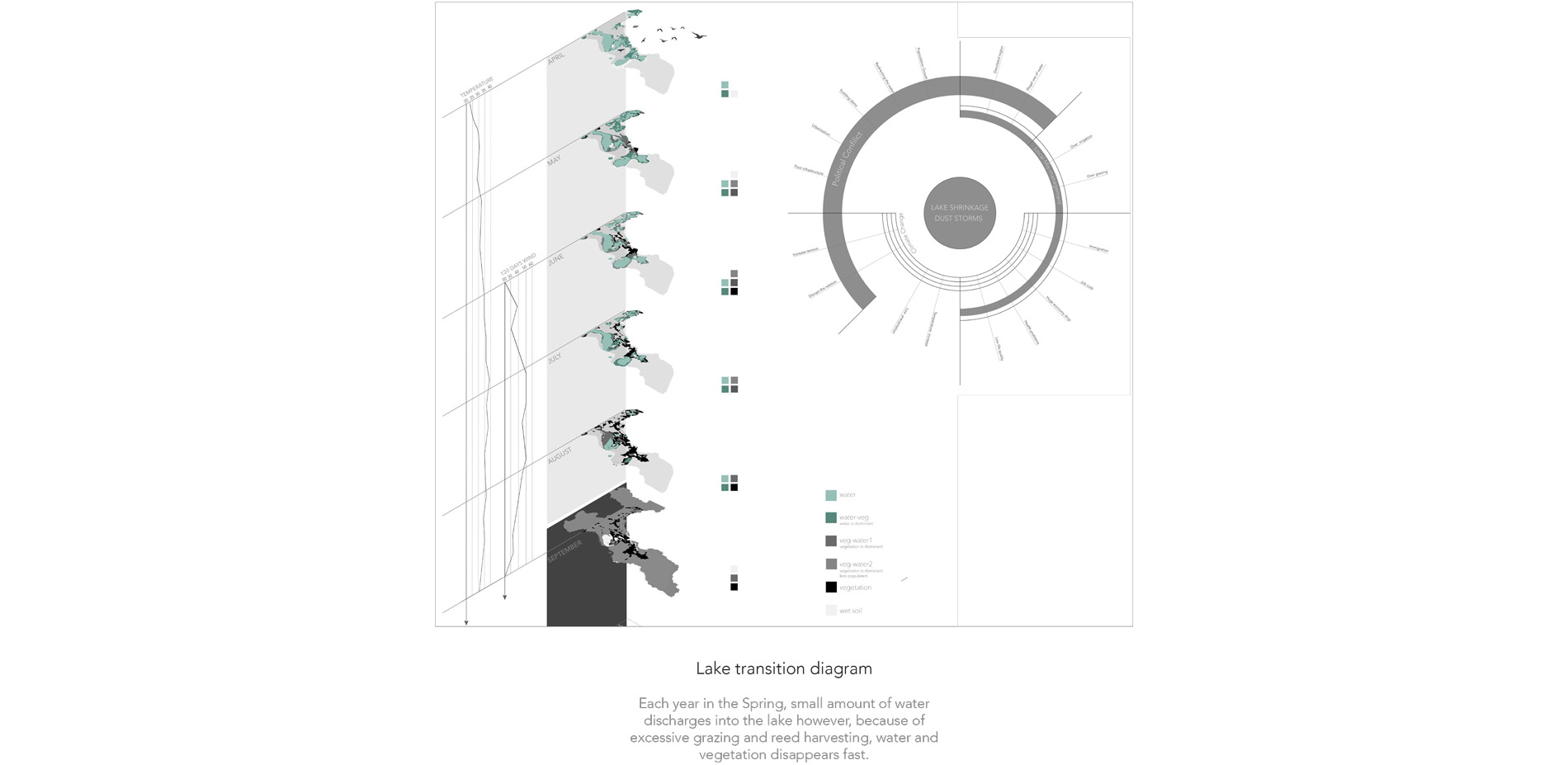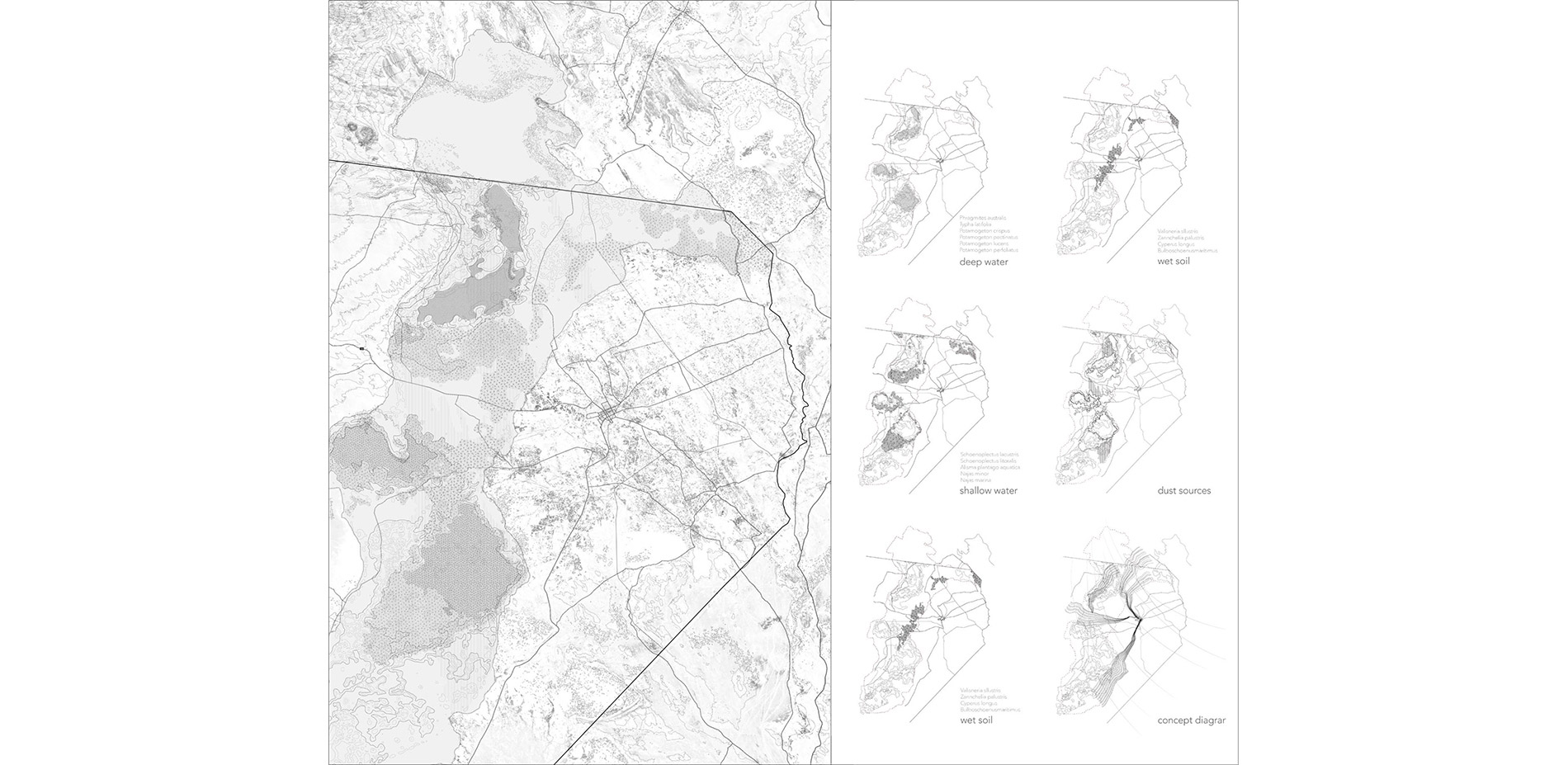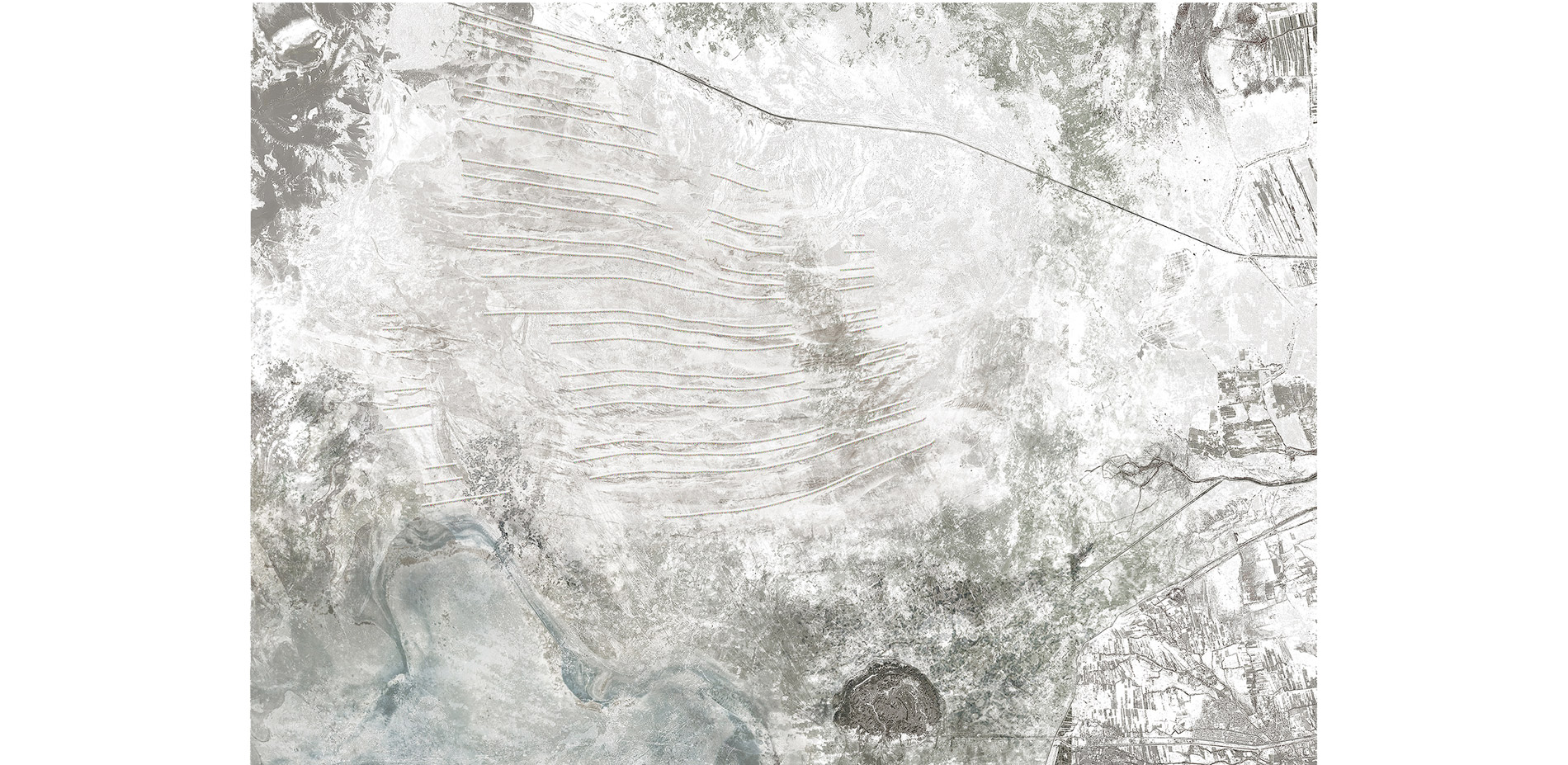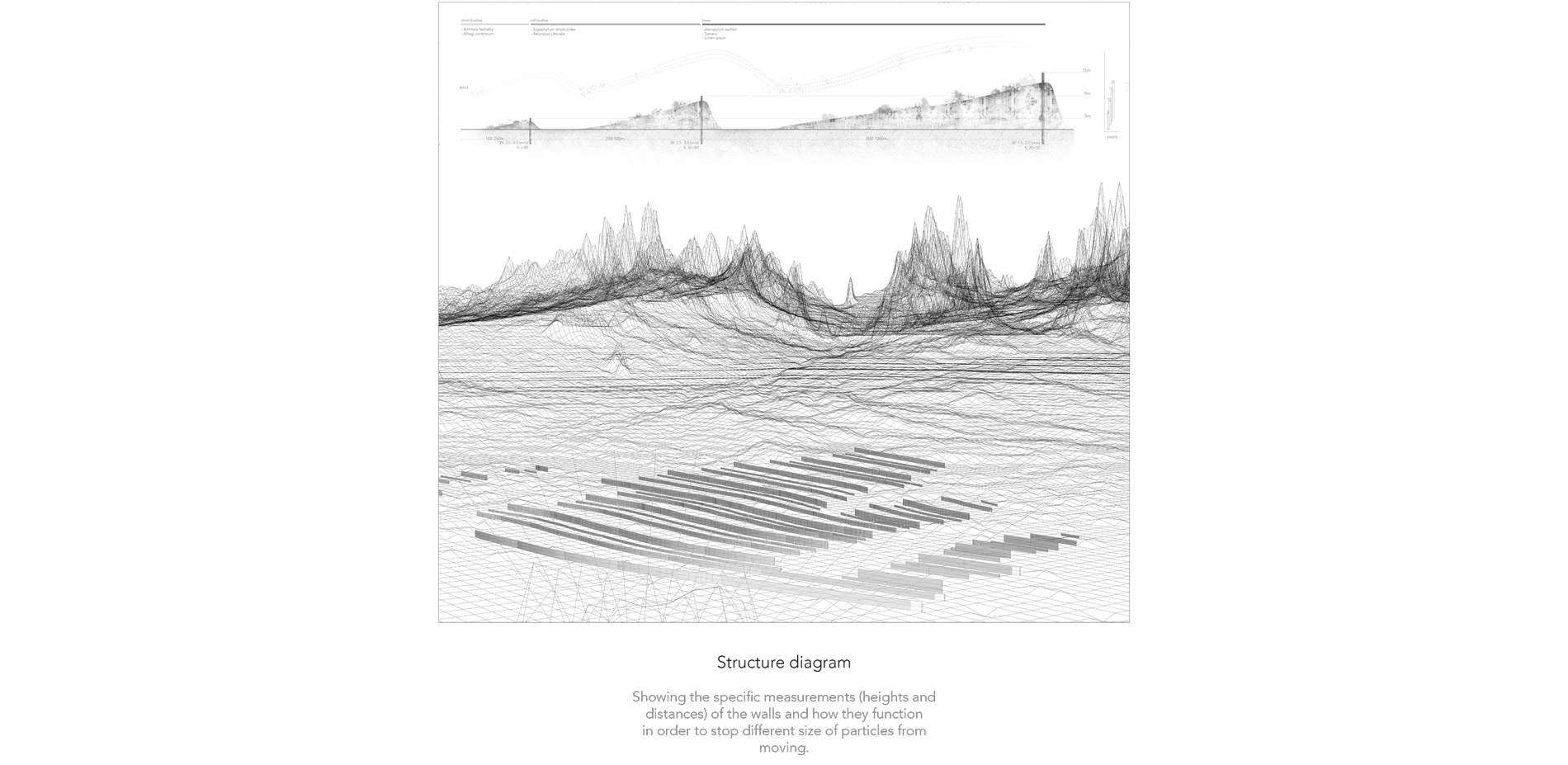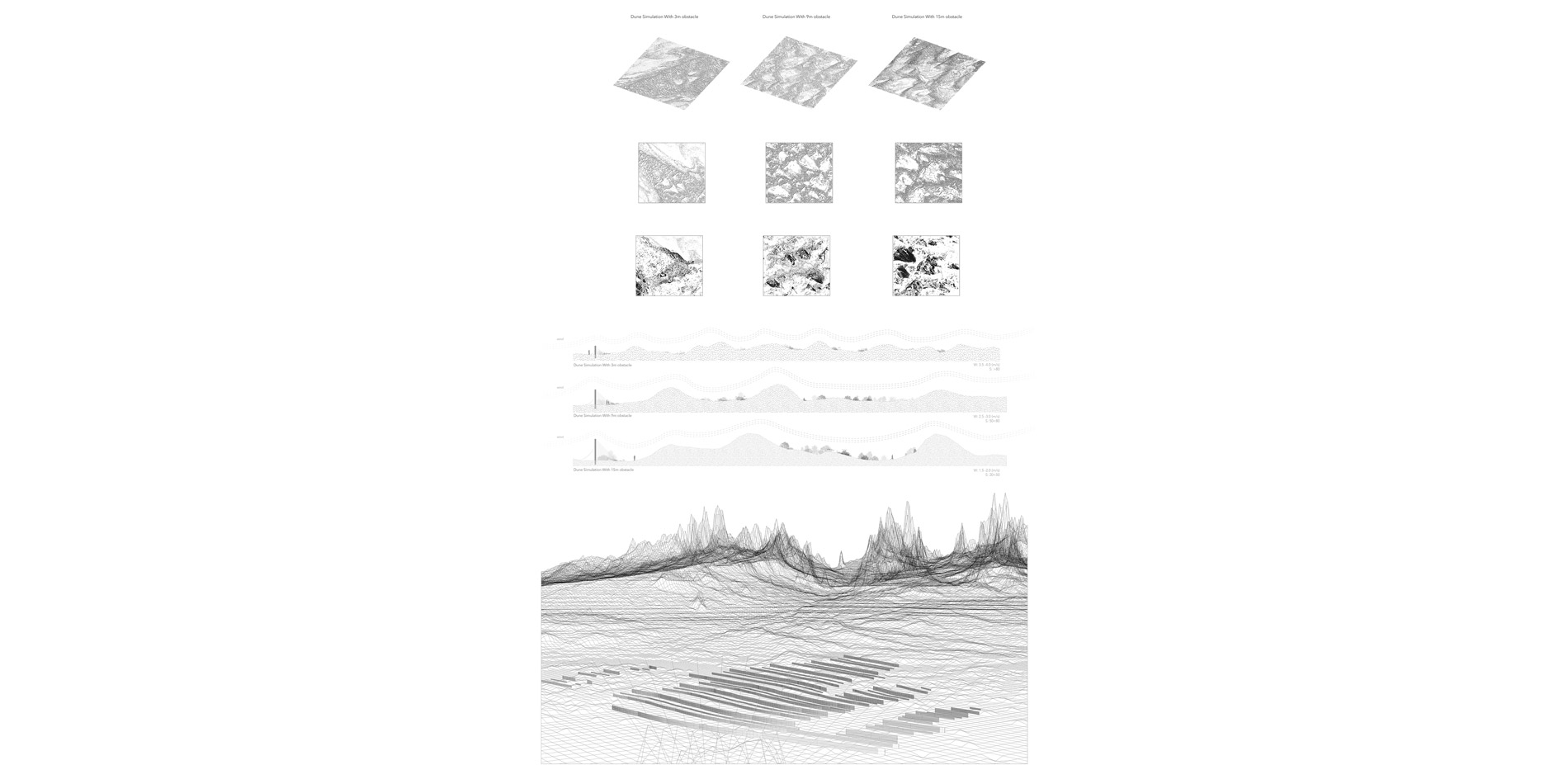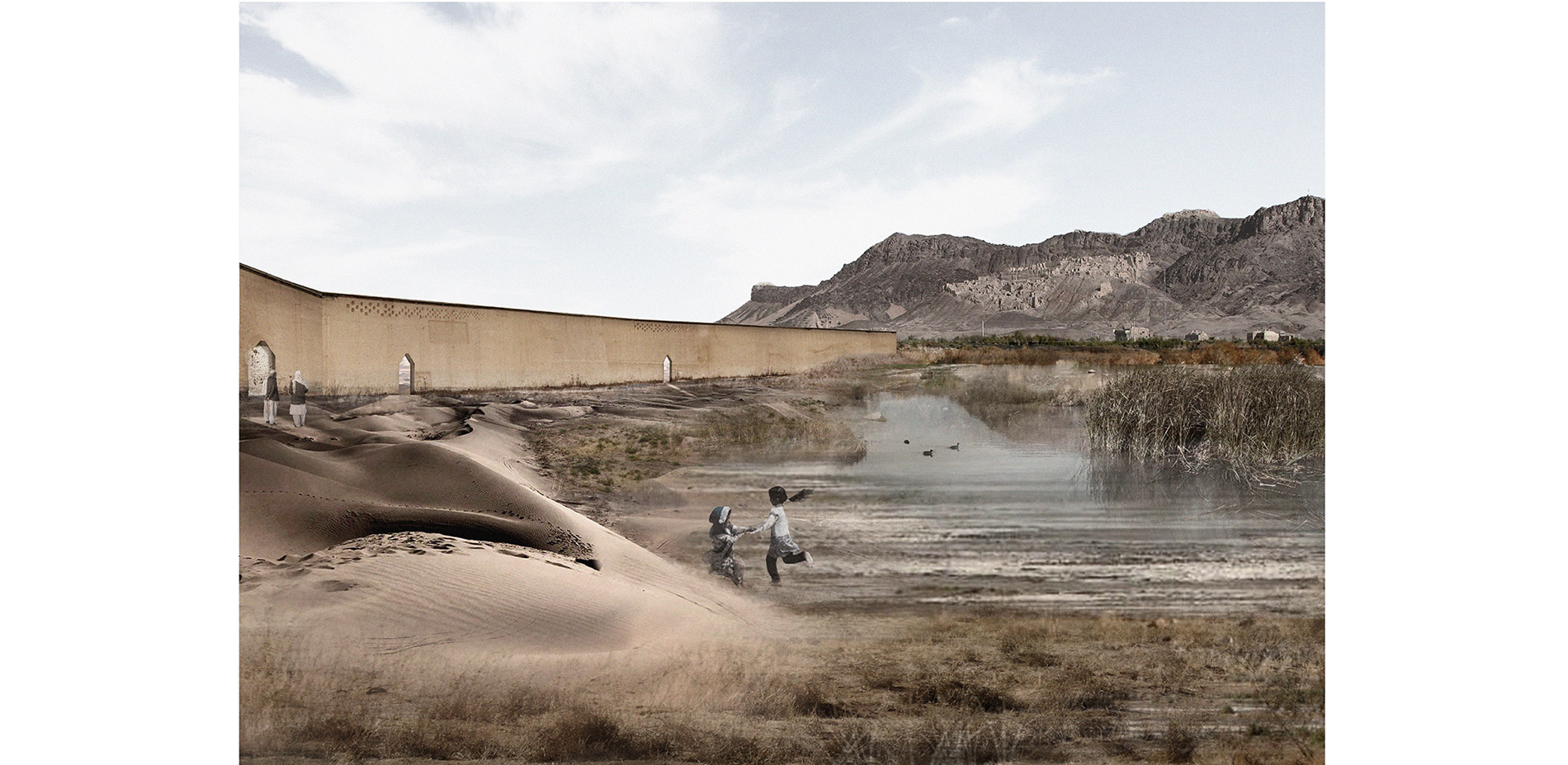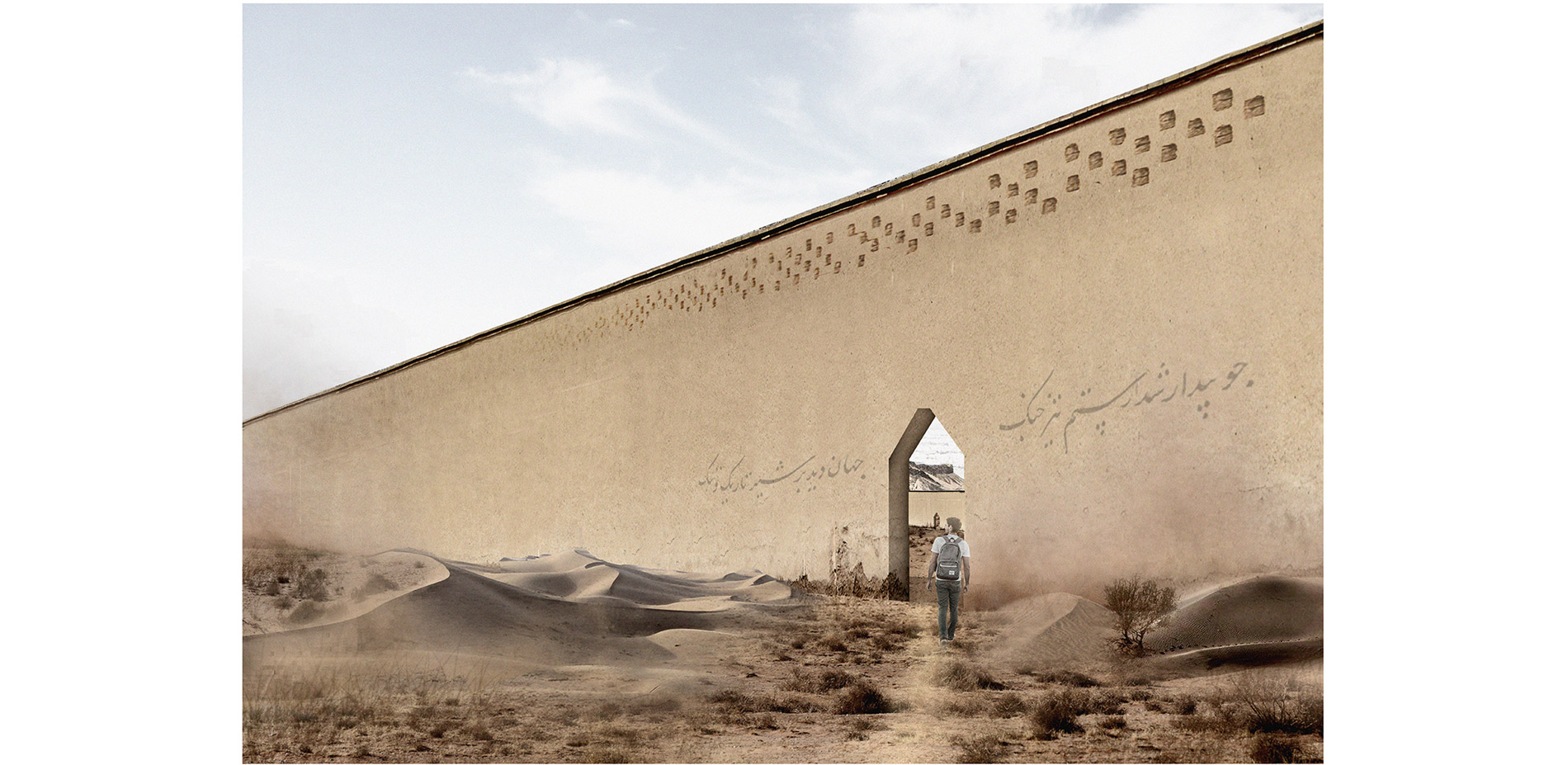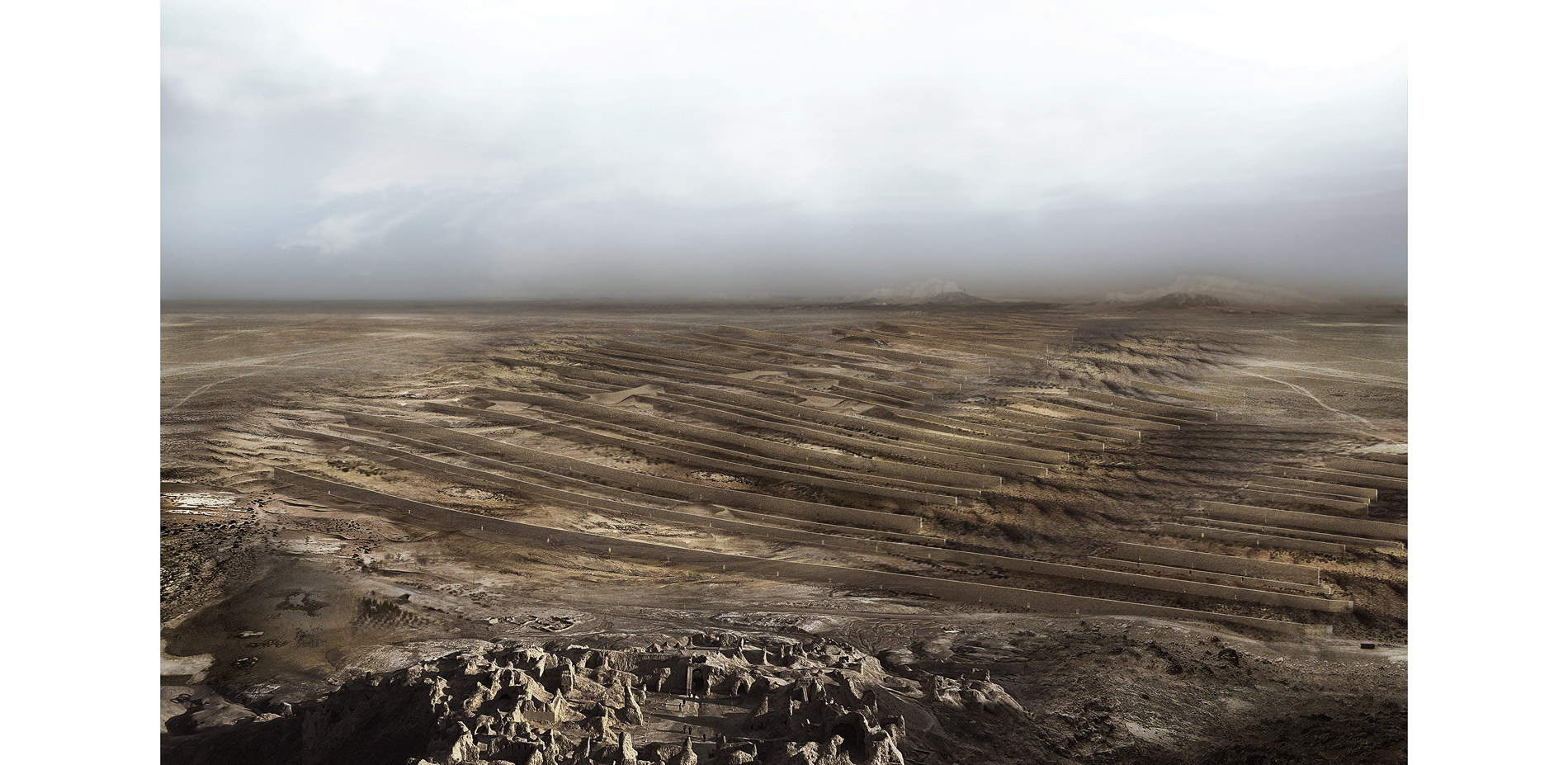In Between Walls
AWARD OF EXCELLENCE
General Design
Hamun Lake, Sistan, Iran | Niloufar Makaremi Esfarjani, Student ASLA | Faculty Advisors: Fadi Masoud, ASLA
University of Toronto
We’re building walls to separate countries; but in this project, they’re being used to bring people together. That’s powerful.
- 2018 Awards Jury
PROJECT STATEMENT
As a result of political conflict between neighbouring countries, Afghanistan has diverted water from the transboundary Hamoun lakes, as such, Iran's wetlands have dried up. Combined with the effects of climate change, this area has become a major source of dust storms affecting eastern Iran and southwestern Afghanistan, causing socio-economic, health, and environmental issues and compromising valuable cultural sites.
Based on the physics of dust storms, and with the threefold objective of ecological improvement, cultural reconnection, and a diplomatic gesture, this thesis proposes implementing an armature in the landscape: a series of strategically located walls that takes advantage of natural forces.
PROJECT NARRATIVE
For the past 5000 years, the Hamoun lakes have been a major source of food and shelter for people in central Asia. This complex system of wetlands other than having a high ecological value, also holds both cultural and historical significance for indigenous people of the region.These transboundary lakes border Iran and Afghistan. River system originated from Hindu kush in east of Afghanistan discharge into an inland depression which forms the Hamoun Lakes.
Iran and Afghanistan had an agreement since 1870 on how to share the water. However, over time a long series of events such as a civil war, Taliban power struggles in Afghanistan and revolution in Iran, rendered the agreement disregarded. Tension between the two countries has persisted ever since.
These political conflicts in conjunction with drought, climate change and local mismanagement in the region have caused the lakes to dry up and generate both dust and sand storms.
The storms impact both Iran and Afghanistan alike. With socio-economic and environmental issues effecting the livelihood of residents in either country. Serving as proof in how meaningless the borders and boundaries are when it comes to environmental issue that can directly affect human wellbeing.
The strategy contends with the issue by addressing dust at its source. Hamoun lake. Working with environmental forces such as wind patterns and wetland systems the strategy harnesses the sites existing potential.
Maintaining vegetation cover in the lake bed instead of the reed harvesting and grazing that currently takes place, will help to retain water in the lakes deepest region for longer periods of time, changing the ephemeral nature of the lake. This will ultimately contribute to the suppression of dust in the region.
For the places that are still dry and generate dust storms, Based on the physics of dust storms, dust particle and wind velocity and with the objective of ecological improvement as part of a functional landscape, my project proposes a physical dust-mitigation armature in the landscape.
By identifying the dust source and composition, as well as behavior, I placed a series of strategically located walls with varying heights, apertures and distances that work with the natural forces and act as wind break for sediment capture before the dust reaches the nearby cities and towns.
In addition to their strategic location in relation to the predominant wind direction in the lake dried bed, 7 series of walls have been proposed, that stretch 13kms across the site with a high cultural and historical value.
The series of walls stretch perpendicularly along a major road terminating in a mountain located in the heart of Hamoun lake. The mountain is of importance to the three ancient faiths of Zoroastrianism, Christianity and Islam and considered as a holy place for the residents of the region.
This mountainm which is also called rustam mount, is the birth place of one of the most celebrated heroes in Persian epic literature, named Rustam. Famous for a story in which he has to go through seven challenges to reverse a curse that had blinded the people in Persia.
Moving through this series of 7 walls reflects and evokes the emotions and thoughts that allude to the story of rustam which is deeply embedded in the culture of this region. The walls have cuts and gates that frame views to this mountain guide and direct people to a spectacular view of the landscape beyond.
While the arrangement of these walls, their height and distance are based on the scientific rationale of particle physics, to protect the region from dust storms. The seven segments of the walls weave a narrative that connects the locals to a site and a landscape of significant historical and cultural value
In a world where walls are seen as dividers, my proposed walls help to create a functional landscape that brings people back to a site which seen as blighted and damaged. The walls in this proposal are meant to connect different groups of people and allow them to inhabit places that they have been pushed out of.
These Walls act as a unifying agent between people and the landscape and hopefully we can still find beauty in between walls.
